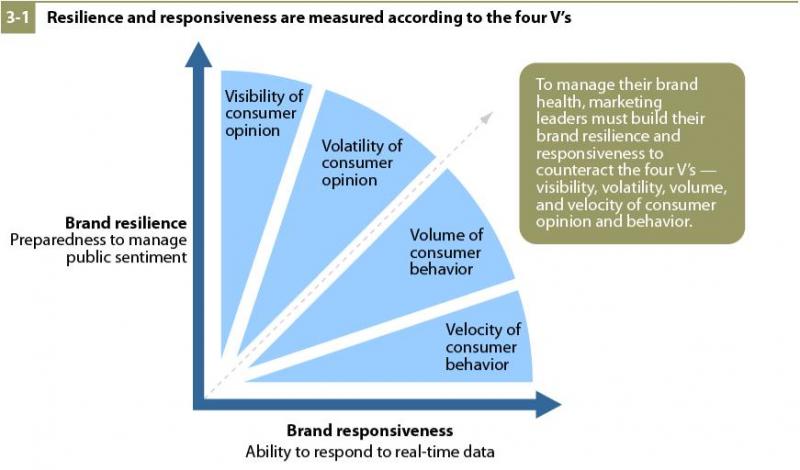How Healthy Is Your Brand?
I recently talked to Advertising Age about a topic that has become increasingly frustrating for many marketing leaders — how to more effectively manage their brand health in the wake of a tidal wave of consumer sentiment and data. Here's a shorter version of the article and the research.
Today, a brand's health is strengthened or weakened by every interaction and exposure with a consumer, which requires a more vigilant approach to managing brand perception. To keep track of your always-on, anytime, anywhere, unfettered-public-opinion-sharing customers, CMOs must demand a new dashboard to augment classic brand metrics. There are four factors of digital influence that CMOs must consider monitoring:
- Volume. Brand perceptions are typically measured using representative samples of consumers. But why settle for a mere sample when more than 81% of US adults use social media to create at least 500-billion influence impressions on products and services?
- Velocity. Marketers usually perform brand-tracking studies once a year or quarterly. But that's too infrequent to monitor the impact of real-time consumer opinion, as Kenneth Cole's Twitter fiasco demonstrated — resulting in a 64% decline in brand equity scores in just three days.
- Visibility. Consumers are now empowered to voice their unfiltered opinions about a brand to the general public. Already, 25% of search results for the world's 20 largest brands are linked to user-generated content.
- Volatility. Brand sentiment can be increasingly unpredictable in this digital age. Gap learned this the hard way with its new logo unveiling, which received such negative consumer response online that it returned to the old logo one week later.
CMOs need to empower their organization to quickly and intelligently react to the collective real-time consumer opinions and behaviors that affect a brand's perception or performance. Specifically, CMOs can improve their brand health by building the brand's responsiveness and resilience.

Sharpen The Brand's Reflexes By Building Brand Responsiveness
Like a heart monitor, responsive brands manage the real-time performance of the brand's health. This means CMOs must enable the organization to act quickly on new consumer and marketplace intelligence. A great example is how Pizza Hut is improving its responsiveness to customer feedback about the restaurant experience and delivery service. It partnered with Radian6 to monitor Facebook and Twitter and put a system in place to classify, prioritize, and react to dissatisfied customers.
Boost The Brand's Immune System By Building Brand Resilience
CMOs must prepare the organization to weather unpredictable twists and turns of public opinion to protect the long-term value of the brand. How much negative sentiment will cause damage to brand equity? When should the marketing team spring into action? It doesn't have to be a guessing game. Marketers have tools to capture historical data for share of voice and consumer sentiment in order to create thresholds for when to act.
Consider how Gap and Starbucks handled how they unveiled new logos. Both Gap and Starbucks received positive and negative consumer sentiment. Gap, without any historical benchmark, panicked over the situation and retracted the new logo in favor of the old one. Starbucks, on the other hand, was equipped with years of consumer sentiment knowledge built from fostering intimate relationships with consumers through communities like My Starbucks Idea. So Starbucks knew how much criticism to expect and how to handle it. It stuck to its logo and asked consumers to trust it about the decision.
So how do you know if your brand has a clean bill of health or needs a new prescription? Ask yourself: What if you could monitor the brand like the stock market? What if your employees had their own personal brand-health dashboard? If that gets your blood pumping, maybe it's time to get a second opinion about your brand's health.